Signage for the UW Farm
Raising awareness for urban agriculture and food security at UW’s student-run farm and learning laboratory
| Timeline | One year |
| Role | Visual design, construction, budget and team management, material considerations |
| Team | Myself, farm manager Perry Acworth, signposts fabricated by James Blake |
| Topics | physical interaction, visual design, project management |
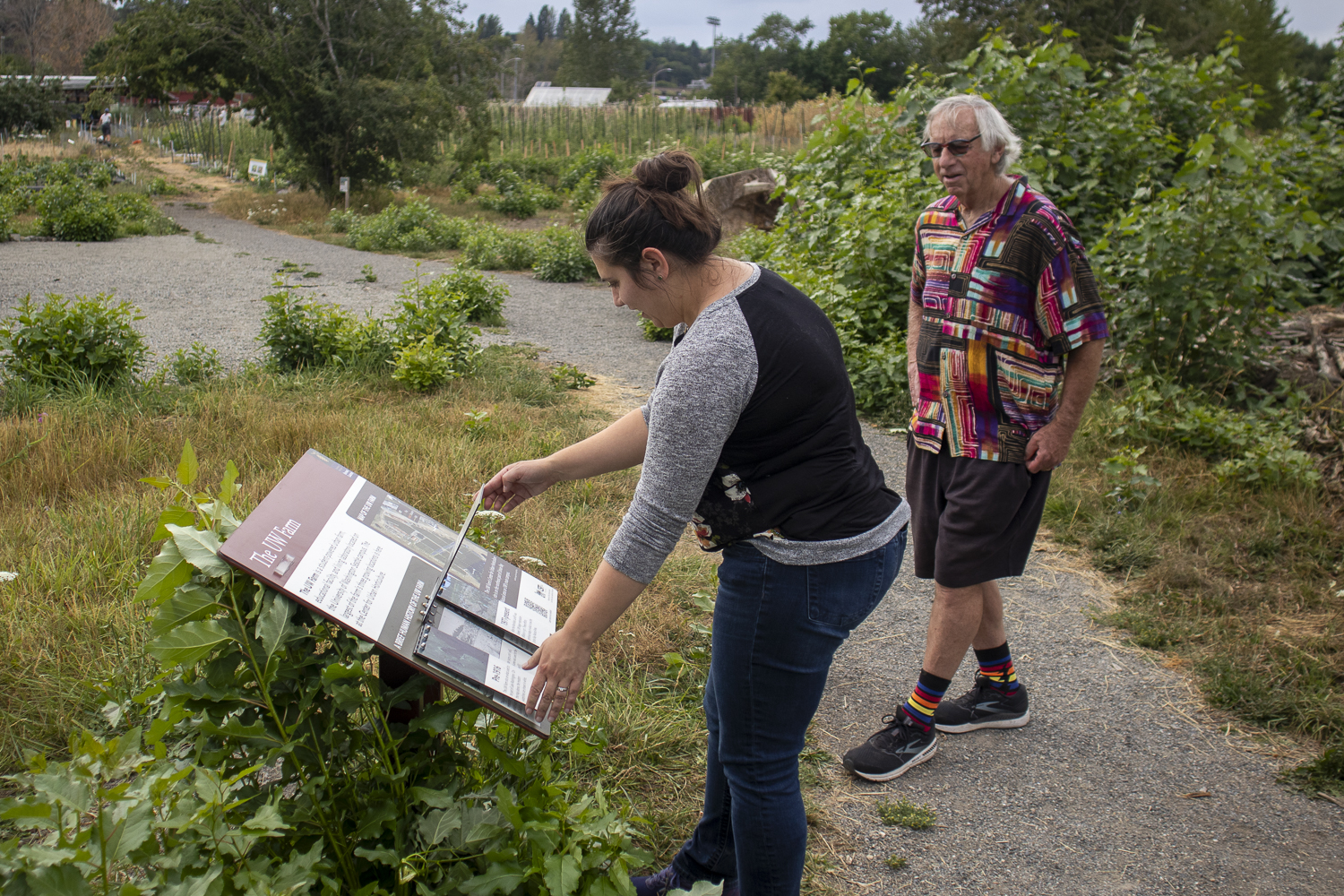
Liftable flaps on the signs spark interest in the history and current practices of the farm.
The UW Farm grows and sells produce, but one of its most important exports is education about urban agriculture, the food system, and food security. With large signs throughout the farm’s Center for Urban Horticulture location, we aim to expand this education not just to those who involve themselves with farm activities, but also to the many community members who pass through the farm every day. Some of the signs have interactive lift-flaps, and all of them have Braille titles.
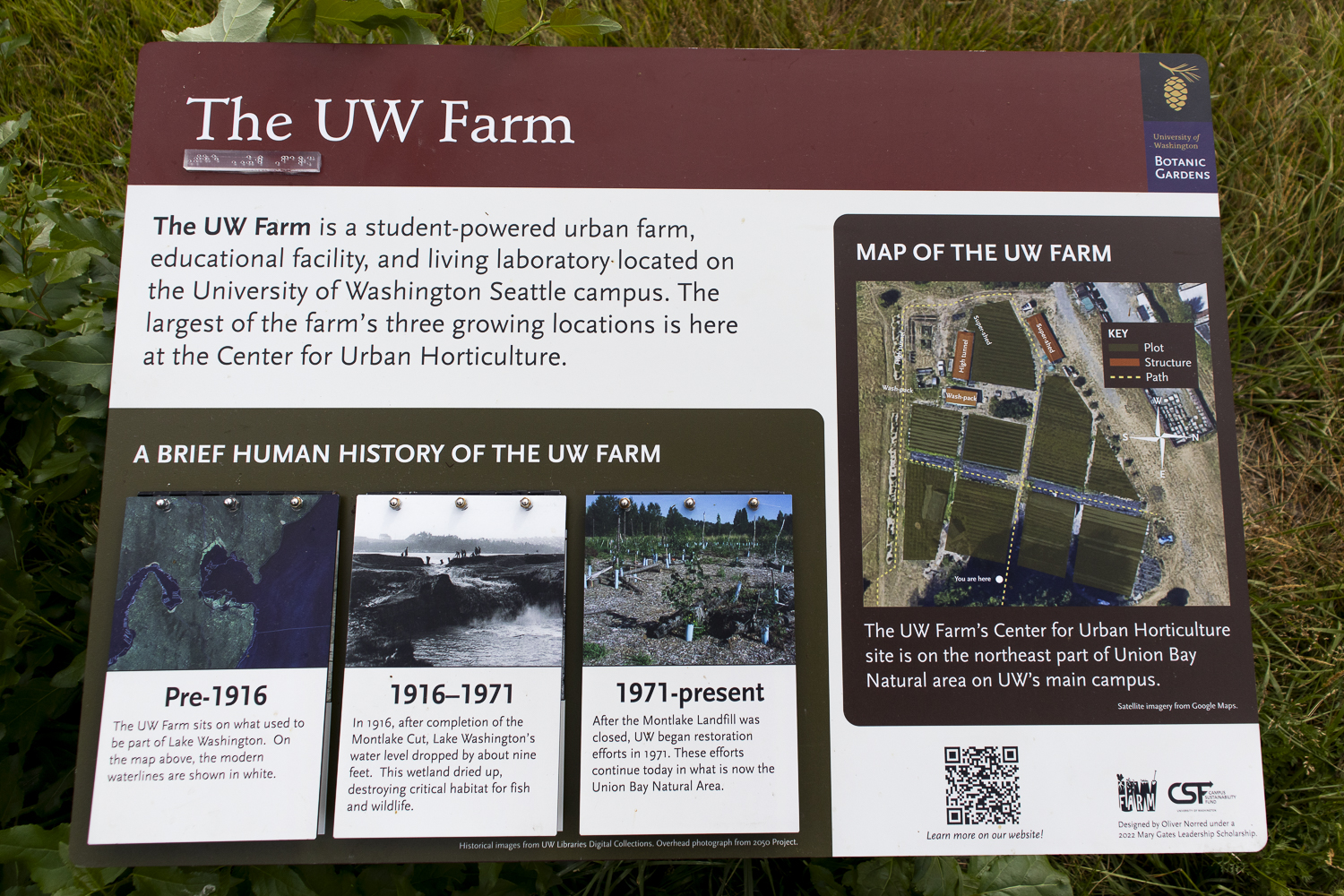
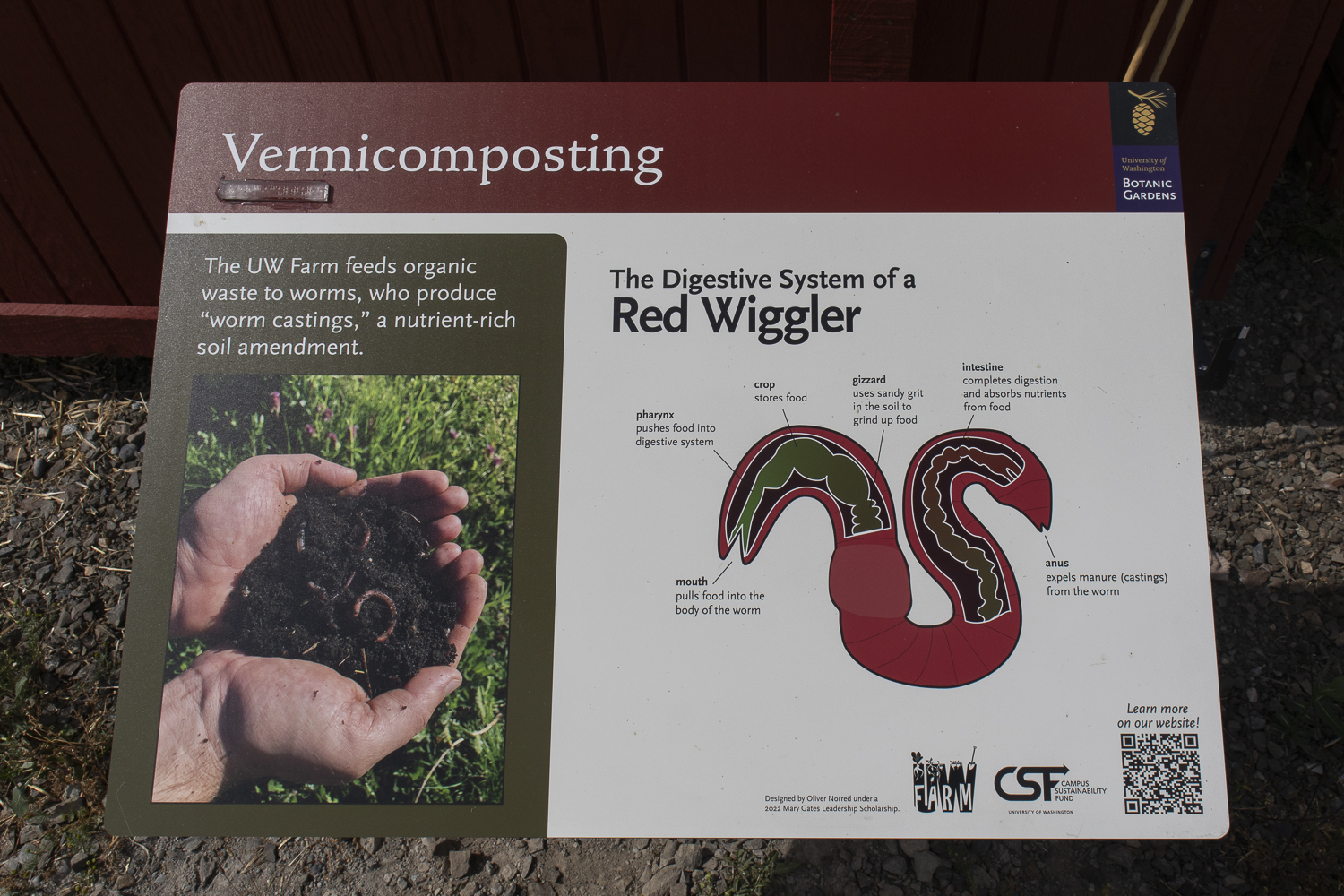
Four signs, three with liftable flaps, were installed at the UW Farm’s Center for Urban Horticulture location. There are two entrance signs, one sign explaining where the UW Farm sends its produce, and one sign about the UW Farm’s vermicomposting facility.
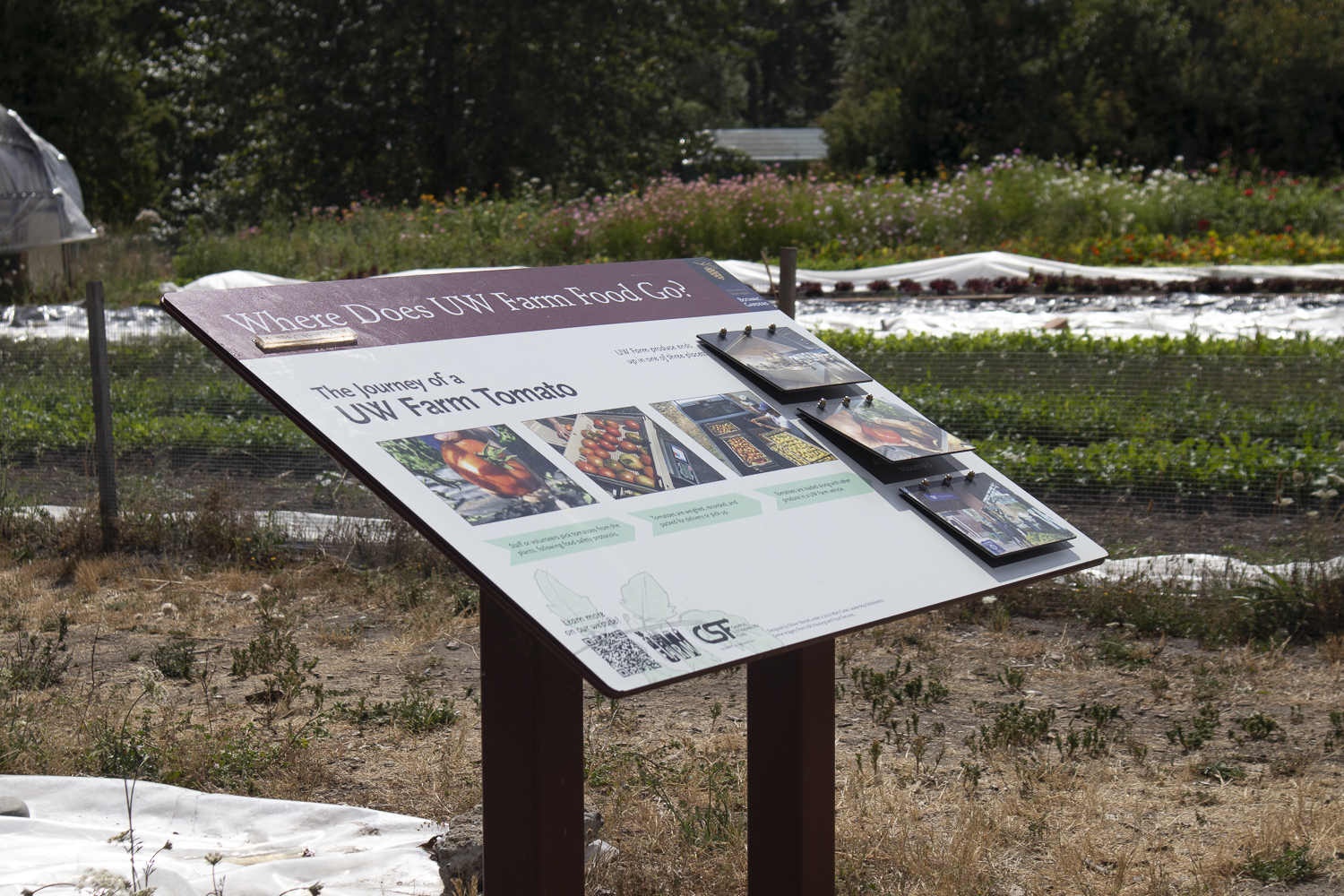
This sign answers the most-asked question from newcomers: “Where does UW Farm food go?”
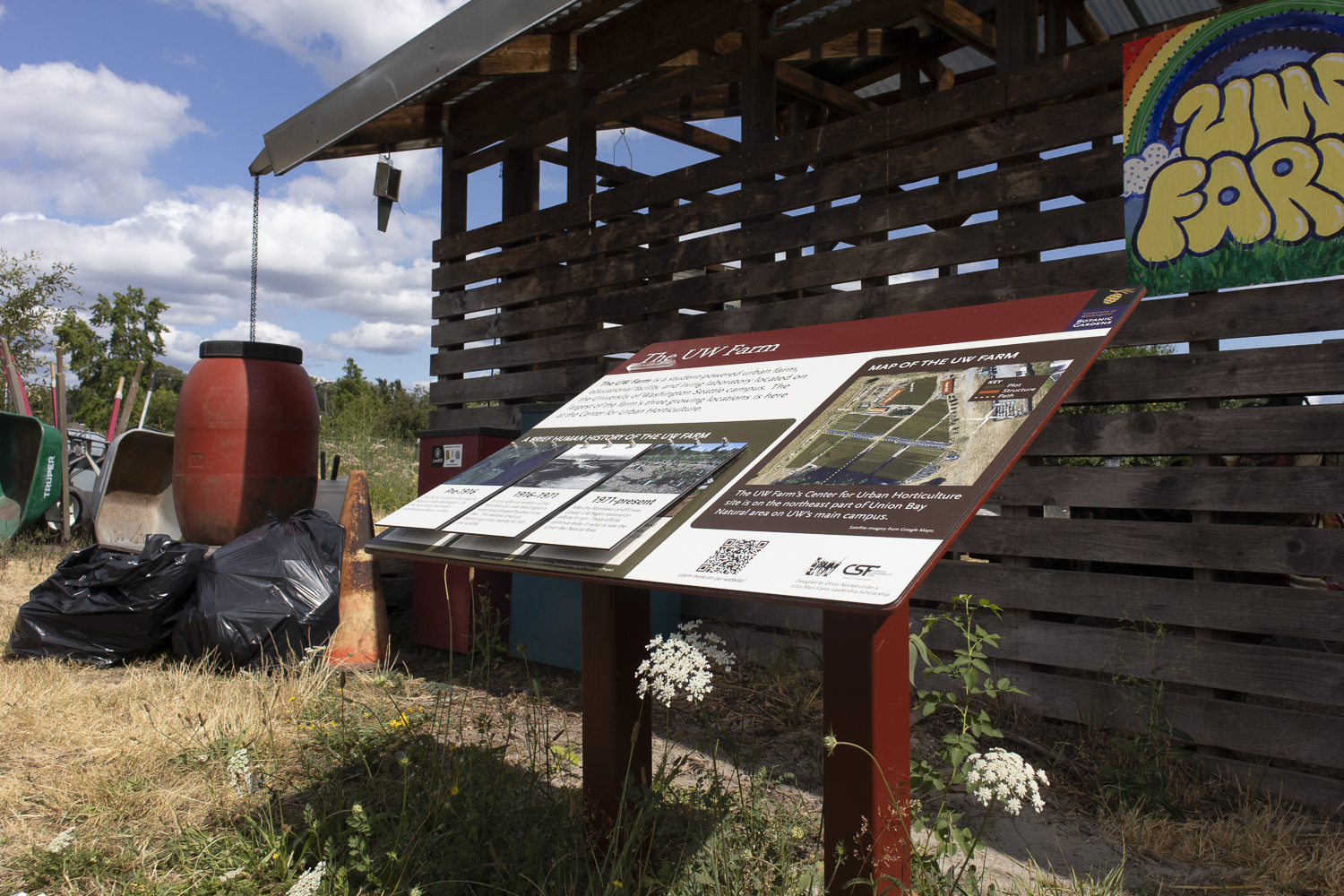
The entrance signs provide an introduction, a map, and a brief human history of the UW Farm.
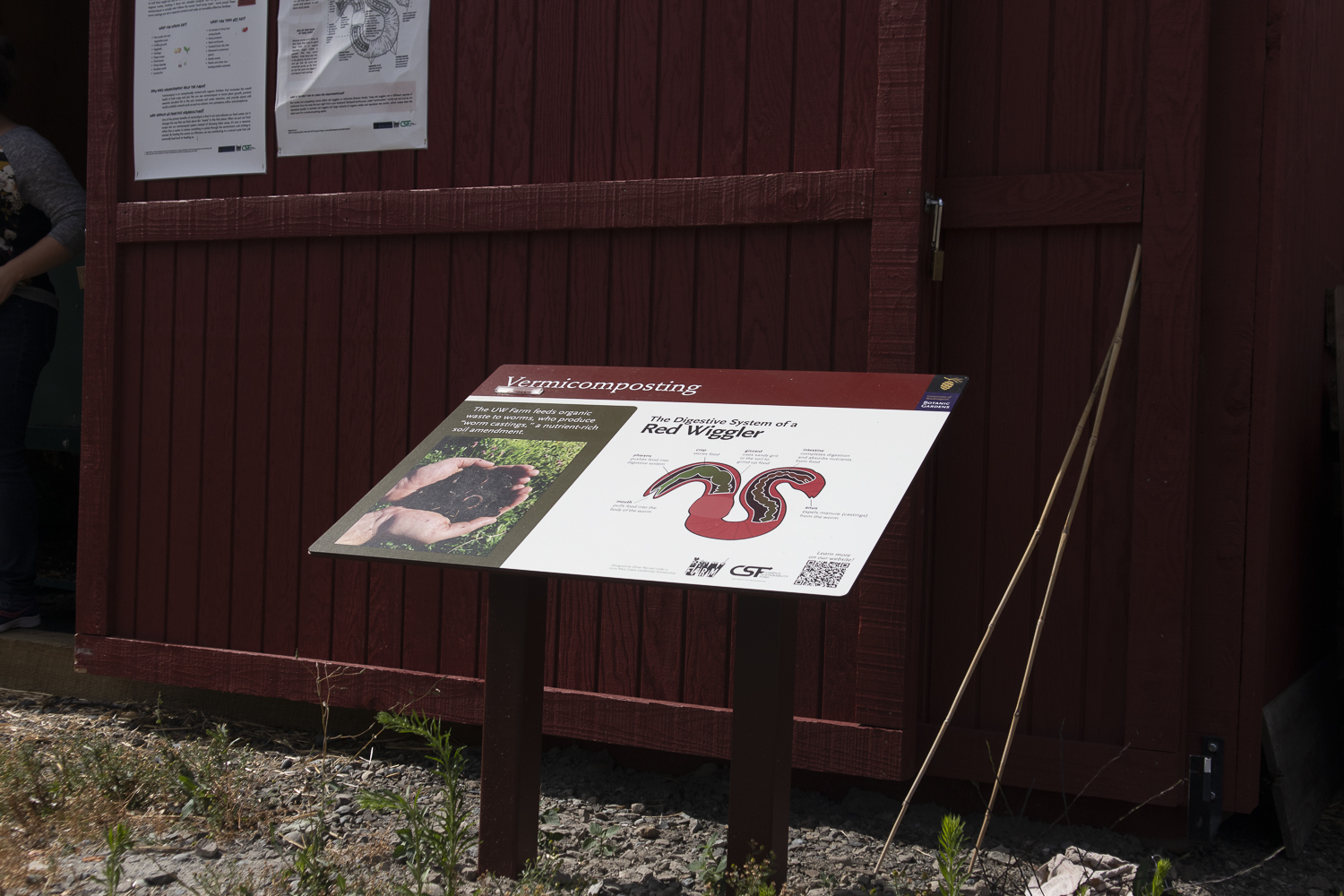
This sign explains the purpose and science behind the farm’s vermicomposting (worm-raising) facility.

“Here, guys, lift that 100-lb signpost while I take a photo!”

No cement allowed on the organic farm, so we had to dig deep.

Volunteers are crucial.

I ended up laser-engraving the braille into acrylic and adhering it with 2-part epoxy; we’ll see how it holds up.